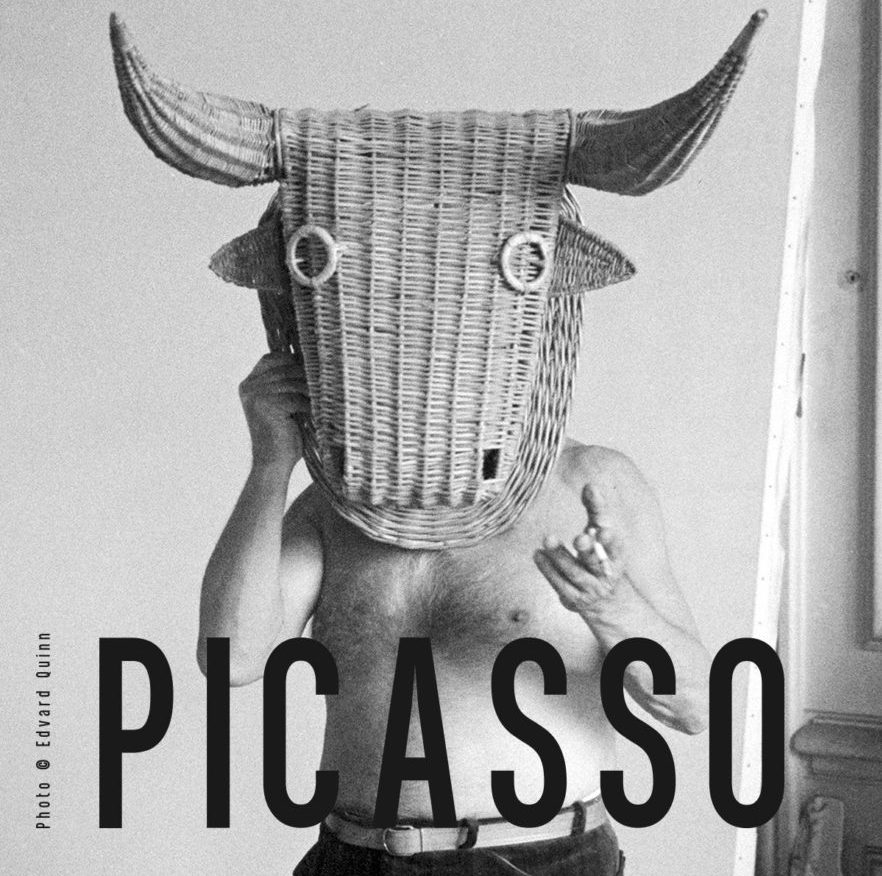Picasso achieved true fame during the nineteen thirties, when the La Suite Vollard collection originated. His first monumental retrospective exhibition was held at the magnificent Georges Petit Gallery in Paris in 1932, Picasso exhibited 225 pictures, seven sculptures and six illustrated books. He had recently celebrated his fiftieth birthday and the poor Spanish immigrant had managed to land the role of an international star. In spite of the Great Crisis, the prices of his early paintings broke records.
In this intimate graphic series for friend and gallery owner Ambroise Vollard we discover Picasso as a clearly timeless artist. La Suite Vollard, a cycle of one hundred graphics, which originated between 1930 and 1937, is divided into a few sections: Miscellaneous, Sculptor’s Studio, Battle of Love, Minotaurus, Rembrandt, Blind Minotaur, Portraits of Ambroise Vollard. Miscellaneous represent the starting point. Motifs of models and also young sailors, acrobats, a faun and hydra, transition into a considerably more comprehensive series called the Sculptor’s Studio. The peace and ease of this part of the cycle devoted to questions of art is disrupted by the works depicting the Minotaur. This destroys everything that the sculptor has established. In four works, the Blind Minotaur is guided through the night by a young girl with a dove. Where to? Artistically probably towards Guernica. Four prints are devoted to the icon of art – Rembrandt. The last three graphics depict the addressee of the cycle, Ambroise Vollard.
His lover at the time and subsequently the mother of his daughter Maya, Marie-Therese Walter, plays the main female role in the cycle. It is no surprise that Picasso’s role is as a Greek sculptor. Only he could compare himself to Phidias as a symbol of art, technical perfection and timeless form. The story takes place on the Greek island, possibly on Crete, in the sculptor’s studio beneath a row of columns. The ambiance is clearly sensual, naked actors, soft pillows; a still life with a bottle of wine, fruit and flowers, the view from the window is dominated by a silhouette of the mountains. The statues assume the rounded curves of a model, the fragrance of physical ecstasy flows among the transparent curtains and rumpled sheets. Sex and works of art exist here in clear connection.
The Minotaur is Picasso’s new image, similar to the harlequin – clown during his pink period, which speaks the truth. The Minotaur was a person undergoing transformation – the one who was changing. The change is the passion and guilt from the title of the exhibition.
The nineteen thirties, a decade that began very promisingly for Picasso and brought him success and fame, ended bitterly and tragically, with his divorce from his wife Olga, the death of Ambroise Vollard, a creative crisis and the cataclysm of war. Picasso was called the greatest discoverer, enchanter of paintings, Proteus – master of transformations. He is an artist that still has much to say in this current, constantly changing time. The path into the centre of the labyrinth of La Suite Vollard leads not only into Picasso’s soul, but also into the depths of art and knowledge.
PABLO PICASSO BIOGRAPHY (1881-1973)
1881, 25th October Born in Malaga
1897 Studies in San Fernando Royal Academy in Madrid.
1900 First visit in Paris, since 1901 resides there permanently.
1901 Picasso accepts his mother´s surname as his own. First Parisian exhibition in the Ambroise Vollard Gallery.
1901 – 1904 Blue Period.
1905-1907 Rose Period
1907 He creates Les Demoiselles d’Avignon, the starting point for Cubism
1907 – 1909 inspired by African masks
1909-1912 Analytical Cubism.
1912-1919 Synthetic Cubism.
1918-1939 Neoclassicism and Surrealism.
1930-1937 Creates La Suite Vollard for gallerist Ambroise Vollard.
1937 From May to June he works on the painting Guernica.
1957 He paints Las Meninas after Velázquéz.
April 8th, 1973 Pablo Picasso passes away in Notre-Dame-de-Vie, in Mougins. He is buried in the garden at Vauvenargues Castle
2nd floor of Modern Wing

